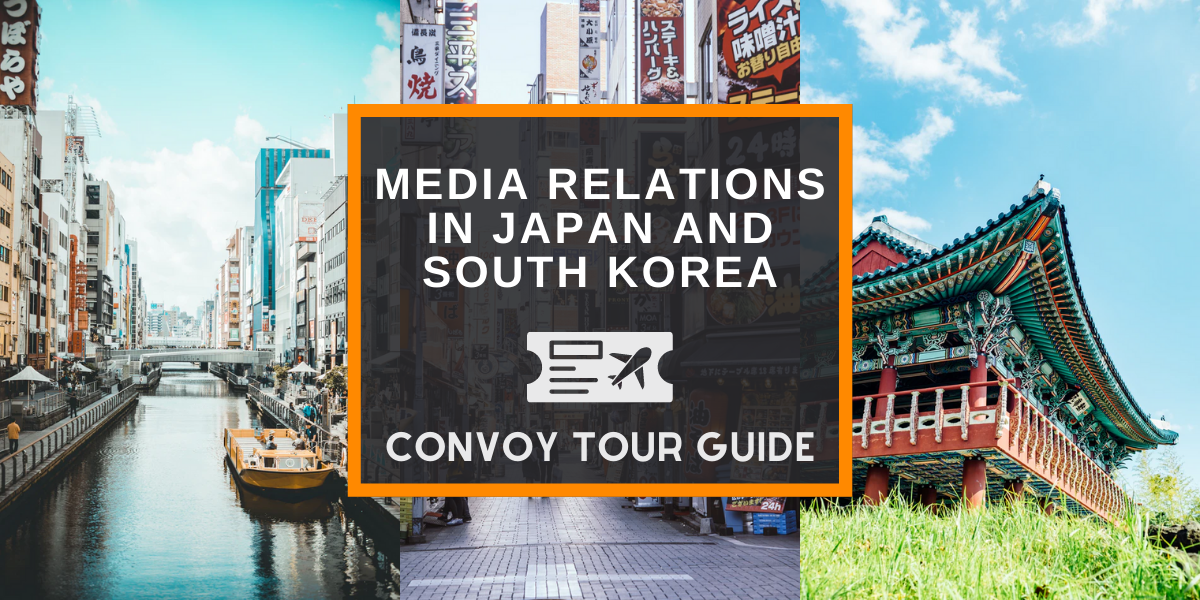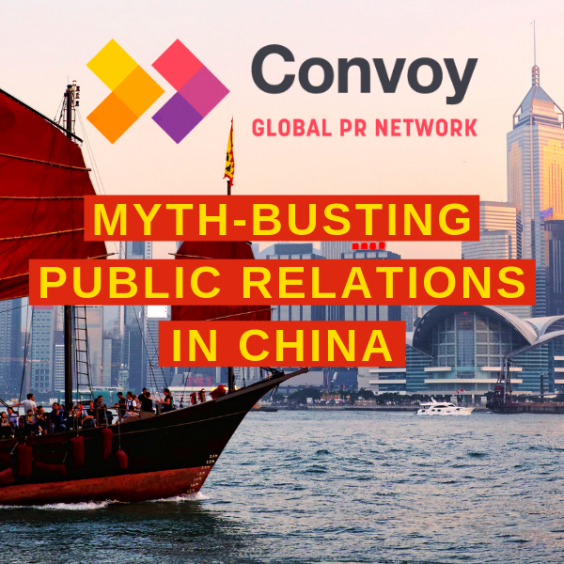Convoy partners, TrainTracks Japan and TwinTracks South Korea, assess the key ingredients for effective media relations in Japan and South Korea.
Often, international tech brands looking to enter Asia come up with a regional PR strategy – and promptly fail. Given that Asia is home to 60% of the world’s population and a whole array of languages and cultures, this is hardly surprising.
Success in any part of Asia requires a highly localised PR approach. That’s why, in this blog, we’ll focus solely on Japan and South Korea. The business landscape in these countries tends to be broadly similar. They are both powerful, self-reliant economies, with home-grown media systems. Both markets are also becoming more service-driven. However, there are some key differences worth noting. Japan is often ranked as one of the world’s most innovative countries, with a legacy of powerful automotive and electronic goods industries. On the other hand, South Korea has traditionally been dominant in shipbuilding, steel and petrochemicals. Digital transformation in businesses tends to be slow and painful in both countries, as its often hampered by the legacy practices of large conglomerates.
Armed with these facts, let’s explore the fundamentals of effective media relations in Japan and South Korea.
Journalists are generalists
The first thing to remember when engaging with journalists in Japan and South Korea is that they will usually be generalists, who transfer to new roles every two to three years. This is sometimes true even in vertical or trade media. In larger media organisations, journalists are often seconded from other departments – HR, operations, finance etc – so PRs will need to be prepared to educate them about a client’s industry or segment.
It’s also worth noting that journalists tend to have stories assigned to them by editors, rather than going out to source their own. As such, it’s just as important to build close relationships with editors and publications as individual journalists.
The implications of journalistic anonymity
Outsiders are often surprised to learn that Japanese journalists do not have bylines. Instead, articles are typically written anonymously. In South Korea, it’s more common to see a journalist’s name attributed to a piece, but it’s devilishly difficult to get hold of their contact details.
This has several interesting implications. Firstly, it means columns and opinion sections are very rare. As such, news-jacking and speaking opportunities are extremely limited. No-one is going to ask for your client’s forward-thinking or controversial thoughts based on a breaking story – unless they are already a highly respected local market player.
Secondly, journalistic anonymity means building a media list is extremely difficult and time consuming. Typically, PRs put hours of painstaking research into this task, based on phone calls, emails, internet searches and relationships built at in-person events (back when we could have in-person events!) It’s also interesting to note that putting stories on the wire is generally ineffective, so media lists are like gold dust. Some international clients balk at the cost of press release distribution in Japan and South Korea, but once they understand the context, it’s easy to see why this service can cost more than in Europe or North America.
A unique media landscape
Given Japan and South Korea’s reputation for cutting-edge consumer tech, you’d be forgiven for assuming that the countries’ media landscapes would be skewed towards digital. In fact, print media has enduring power in both markets, though it is beginning to lose a little ground. Trade media is still primarily distributed on paper, and ‘digital’ editions are often just mirrors of a print publication in PDF or similar format.
However, there’s one way in which the two countries’ media landscapes differ widely. Japan’s business press is dominated by big-name publishers like Nikkei or Nikkei BP, with a limited number of vertical trade publications. South Korea, on the other hand, is filled with independent publishers, including the Electronic Times, Semiconductor Network and Tech World in the b2b tech space.
It almost goes without saying, but stories must be localised to get any traction in these markets. The Japanese and South Korean media expect newcomers to show commitment by demonstrating an in-depth understanding of local issues. Don’t expect journalists to take you at your word. In general, they will be much more granular and detail-focused than their European and North American counterparts – because their readers are – so any research or statistics that you can present to support your claims will be well received.
Given the subtlety and nuances of the Japanese and South Korean media landscapes, it’s little surprise that international tech brands often have difficulty finding their way. The solution is engaging wired-in on-the-ground experts, who understand local business protocols, as well as the global nature of your brand. The same advice is true for all countries in Asia – one generalisation about the region that you can feel safe in making!
To find out more about our PR or marketing services, or our global PR network Convoy, drop us a line at hello@rlyl.com or visit our contact page.




